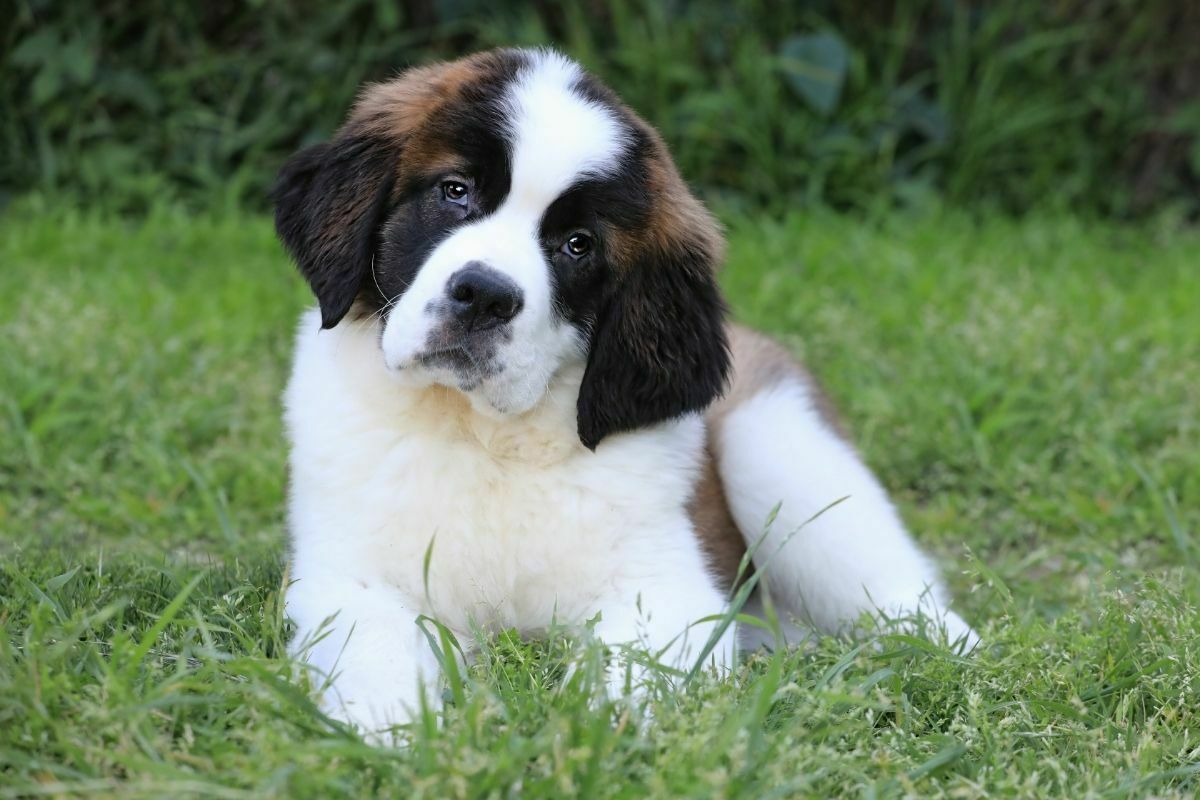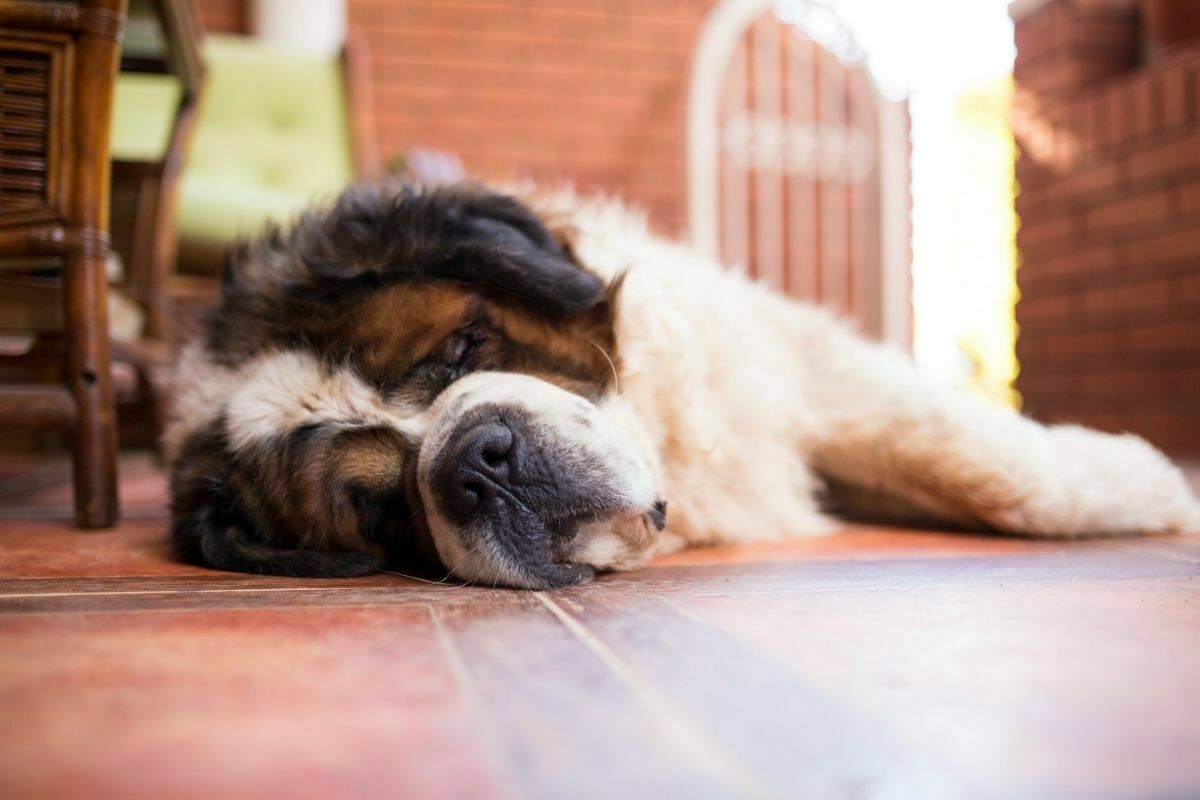Saint Bernards are some of the most loyal dogs around. They are known for their devotion and loyalty to their owners.
They are large, powerful dogs with thick coats and long tails.
They weigh between 100 and 200 pounds and can be over two feet tall. These dogs are extremely devoted to their owners, and they are very protective of them.
Saint Bernards are also very smart and intelligent. They love to play fetch and tug games with their owners. Their name comes from the saint who founded a hospice in the mountains. They’ve been around since the 1200s!
Grooming dogs is an important part of dog ownership. A dog needs to be groomed and bathed regularly to make sure it stays healthy. Dogs love to play and run around, so they need regular exercise. Grooming helps keep your pet clean and well-groomed.
With that in mind, let us take a look at how much you should bathe a Saint Bernard, and when to groom them.

When Should You Bathe Your Saint Bernard?
The biggest problem with bathing a Saint Bernard is space. You might also need to find an assistant (the kids or your partner) because things can get messy! Even so, they only need a full bath around two to three times a year.
Obviously, if the dog becomes stinky (they drool a lot) or if they roll around in the mud, you may need to schedule an emergency bath.
One of the best places to clean a Saint Bernard is out in the backyard, though this is not recommended during the colder seasons. Before cleaning big Fido, you should use a gentle brush to remove any knots and tangles that may be present, as well as excess hair.
Using a hose is a great idea, but make sure the water is set to lukewarm. Wet the coat and make sure the water has soaked through thoroughly. Once you are happy, add some dog-specific shampoo to your Saint Bernard’s back and create a lather.
This lather should be taken down the legs, under the belly, the tail, face, behind the ears – you get it! Use a washcloth on areas like the ears and face. Once this task has been completed, you will need to rinse the fur thoroughly to remove all the soap residue.
Any leftover shampoo may cause skin irritation, so it is best to try and get rid of it all. You can then add dog-specific conditioner too, you just need to repeat the process above.
Once finished, towel dries your Saint Bernard with a number of towels and brush through his hair again.
Taking Care Of A Saint Bernard’s Coat
Taking care of your Saint Bernard’s coat is a crucial aspect of owning one. There are two different types of Saint Bernard: short-haired and long-haired.
Both of these types need coat care, and it can take some time to do so. This means that you must be prepared to keep your Saint Bernard in tip-top shape by giving him the grooming care he needs to stay healthy and happy.
Both coat types constantly shed, with spring and fall being ‘major shedding seasons’. The long-haired types also find that their hair tangles and mats a lot, so you must brush their fur around 3 to 4 times a week. You must also do that for short-haired types too.
Baths will only need to be scheduled occasionally. A Saint Bernard’s coat has water-resistant oils within it, and bathing too much may remove it and cause skin irritations.
You may also want to ‘style’ the long-haired Saint Bernard’s hair, so it becomes more manageable and to keep your dog a lot cooler during hot weather. If you plan on trimming your dog’s hair, then this is normally done every two to three months, but do remember to take him to a professional cleaner.
How To Groom A Saint Bernard

A long-haired and short-haired Saint Bernard needs to be groomed three to four times a week, though this changes during shedding season when some dog owners brush their fur baby daily.
A short-haired Saint Bernard will need a softer rubber brush, whilst a long-haired Saint Bernard will need a pin brush alongside a 2-in-1 comb.
The best way to groom your Saint Bernard is by using the line-brushing method. This may take a while when it comes to the size of this particular breed of dog! Use the comb to remove stubborn tangles and matted hair.
Remember to keep grooming regularly, as if you do not, it may cause issues for your dog’s fur over time and present a problem with constant matting and knots.
Why Does A Saint Bernard Smell Bad?
If you think that your Saint Bernard smells quite bad, then there is a reason. They are a breed that is known for their projectile drooling. Once their neck and face collect a lot of that drool, they are at risk of smelling terrible.
They also have a thick coat; the more active they are, the smellier they will be. So you can also add in extra baths without overdoing it, especially if your Saint Bernard is rather active.
Final Words
A Saint Bernard can weigh up to 200 pounds – that is a lot of dogs to bathe and groom! With that in mind, it can be a daunting prospect when it comes to the regular maintenance of looking after big Fido.
So long as you do not over bathe your Saint Bernard and stick to a bathing schedule of around two to three times a year, your dog should have a healthy coat and be very happy.
Obviously, emergency bathing time may happen due to your Saint Bernard becoming very dirty after a walk, for example.
You will need to groom your Saint Bernard around three to four times a week. This will help remove dry dirt, keep the coat knot and tangle free, and distribute healthy oil along the hair.
Looking after your Saint Bernard needn’t be an ordeal. So long as you keep them clean with grooming and not over-washing them, they will be happy and healthy for a long time.
